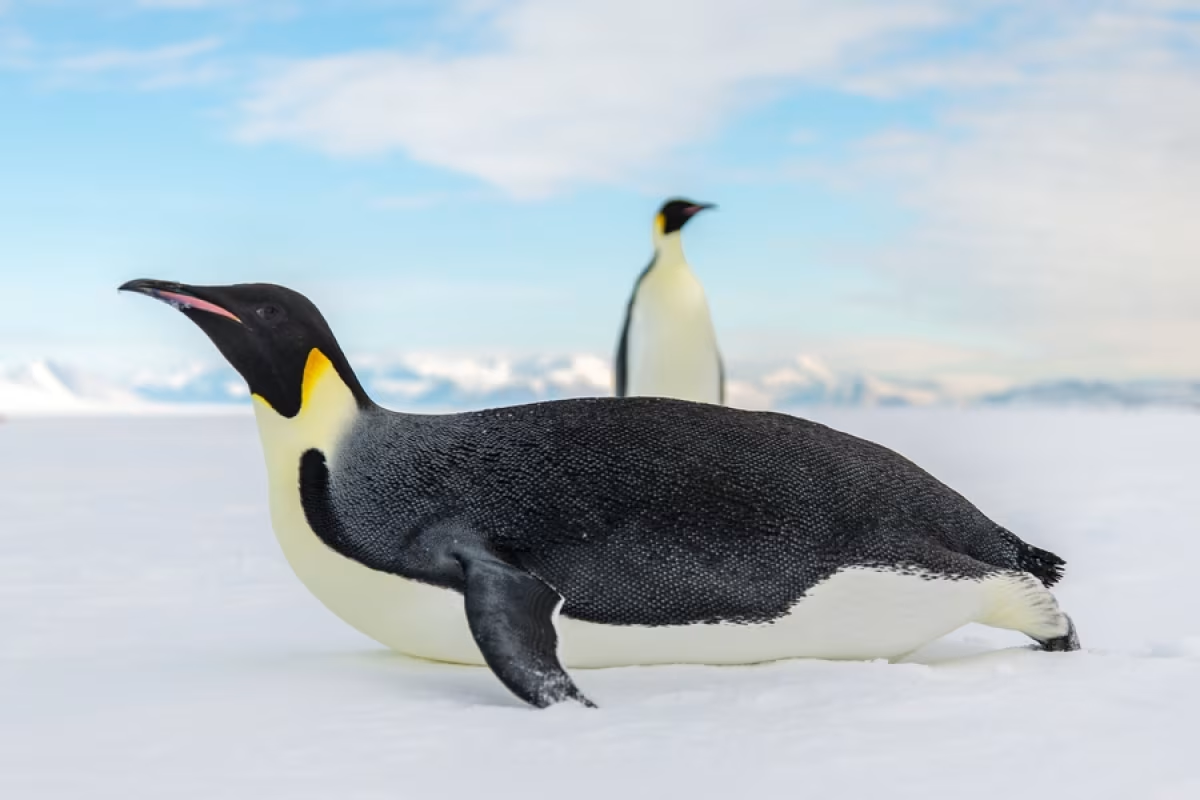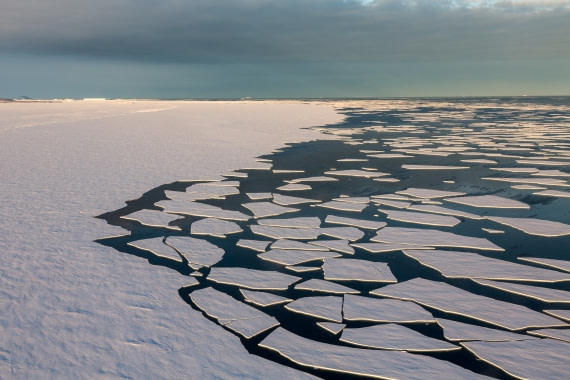McMurdo Sound size and surroundings
McMurdo Sound is an icy body of windswept water bordered on the north by the Ross Sea, on the south by the McMurdo Ice Shelf, and with both a width and length of around 55 km (34 miles). Ross Island forms its eastern boundary and the Royal Society Range its western, each substantial landmasses: The volcanic Mount Erebus on Ross Island rises to a height of 3,794 meters (12,448 feet), and the Royal Society Range towers 4,205 meters (13,796 feet) above the water. The South Pole is located some 1,300 km (810 miles) from McMurdo Sound.
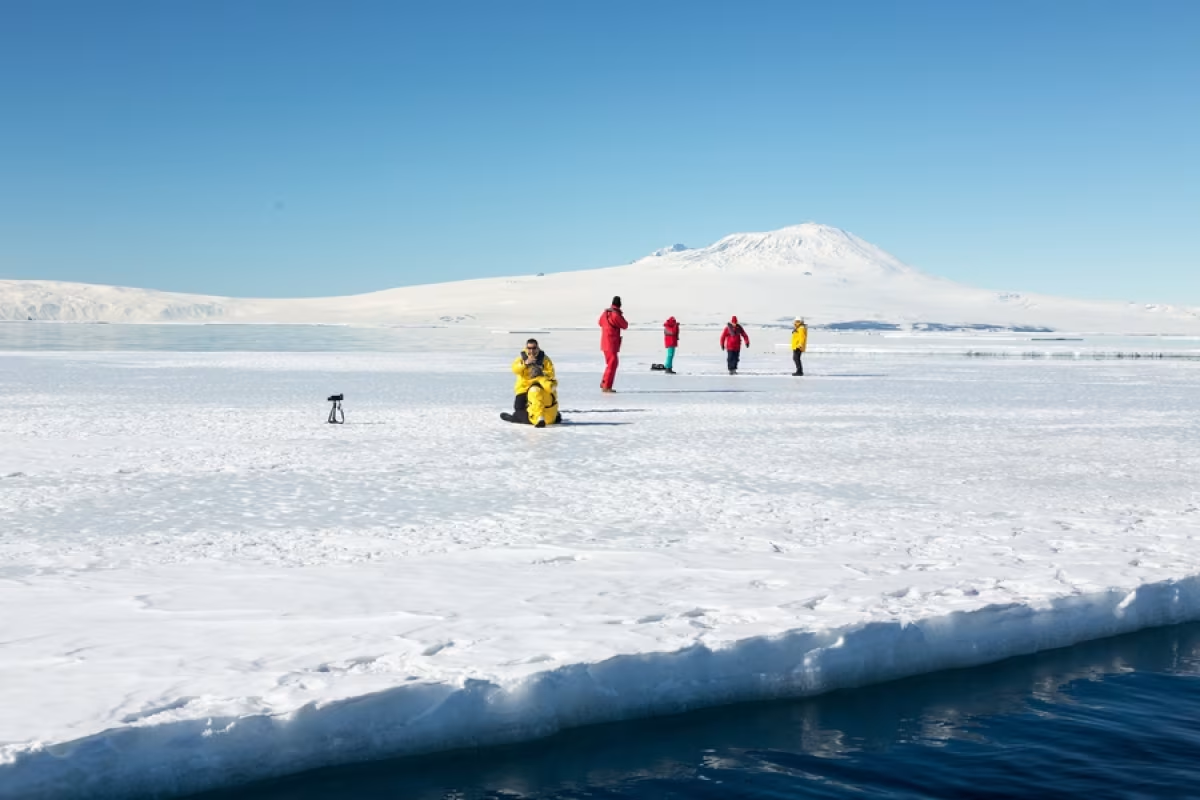
Home to Antarctica’s largest research station
McMurdo Sound is the location of the aptly named McMurdo Station, an American scientific base and Antarctica’s largest research station. The Winter Quarters Bay harbor at the base is the southernmost seaport in the world.

Weather and temperature in McMurdo Sound
Due to the severe weather at McMurdo Sound, less than 10 percent of the shoreline is free of fast ice. Frigid katabatic winds, a type of drainage wind that conveys high-density cold air down from areas of high elevation, drops from the Antarctic plateau and contributes to temperatures as low as -51°C (-60°F).
The Southern Ocean’s chilling circumpolar currents also keep McMurdo Sound cold, minimizing the influx of warmer waters from the South Atlantic and South Pacific. This is partly why McMurdo Sound sea ice stays around 3 meters (9.8 feet) thick during the Southern Hemisphere winters, though it is chiefly the high elevations and freezing katabatic winds that determine the location’s severe weather.
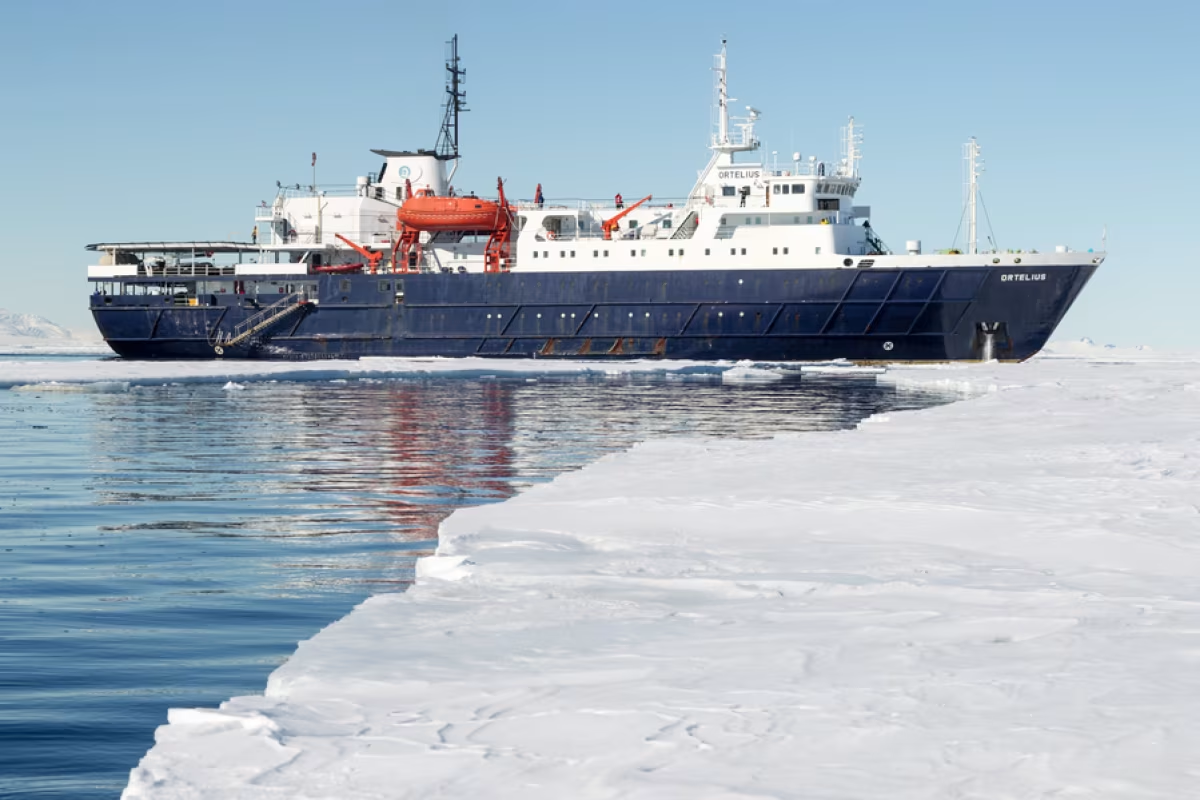
McMurdo Sound discovery and history
In February of 1841, Captain James Clark Ross discovered McMurdo Sound and named it after a lieutenant on one of his ships: Archibald McMurdo of the ill-fated HMS Terror, abandoned in 1845 and found again in 2016.
Because McMurdo Sound proved such a strategic waterway, the location was frequented often over the ensuing years. Both Ernest Shackleton and Robert Scott built bases near its coastline in the early 1900s, using the area as a jump-off point for their South Pole expeditions.
Even today, McMurdo Sound continues to be a useful waypoint. Passengers and cargo are often flown into and out of the Williams Field airstrips, delivering personnel and supplies to surrounding bases and passing tankers.
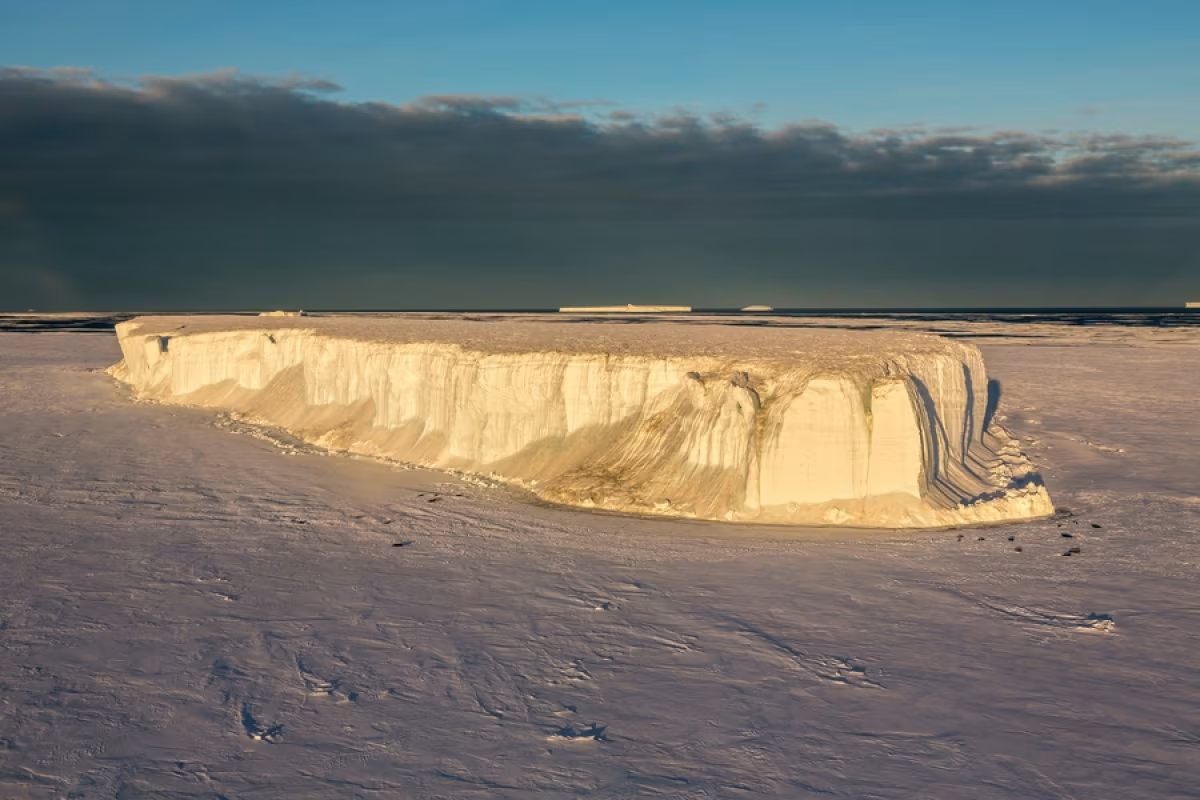
The penguins, whales, and seals of McMurdo Sound
Despite the harsh conditions of McMurdo Sound, the location is home to a variety of wildlife much beloved of polar travelers. Penguins live in the McMurdo Sound area, feeding on the krill, squid, crustaceans, and fish that populate the waters there. Specifically Adélie and Emperor penguins can be spotted around McMurdo Sound, and along with the area’s crabeater seals and Weddell seals, are the common prey of killer whales and even leopard seals.
Beaufort Island, situated near the northern entrance to McMurdo Sound, sustains a protected penguin colony, and the easterly Cape Royds houses the world’s most southern Adélie penguin rookery. The many attractions of McMurdo Sound, animal and otherwise, keep it a tourist focal point regardless of its often-brutal weather.
